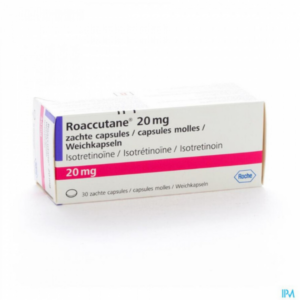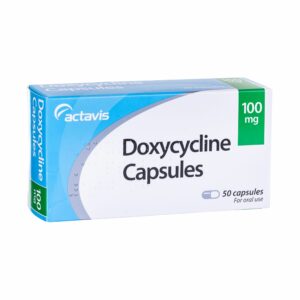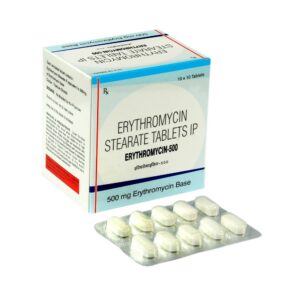Acne
Showing all 3 results
Acne
What is acne?
Acne or acne vulgaris is one of the most common skin diseases involving the sebaceous glands and hair follicles. A disorder of cornification (keratosis) is primary in acne. The condition is accompanied by excessive sebum secretion, which oxidizes in the output passages under dark staining. This is how the blackhead or comedo, the primary efflorescence of acne vulgaris, is formed. The sebum can be squeezed out of the follicle opening like ointment from a tube.
Preferred localizations are:
face;
neck;
chest;
back;
shoulders;
upper arms.
Secondary inflammation resulting from infection with (usually anaerobic) bacteria causes acne pustules and acne nodules to form. Sometimes subcutaneous (subcutaneous) infiltrates and softening foci develop.
As a rule, acne is complicated by seborrheic disease, a condition of excessive sebum secretion, resulting in oily skin.
This sebum secretion is a result of the fact that the function of the sebaceous glands is strongly influenced by the nervous system and hormones. The frequent occurrence of acne during puberty also points in this direction.
Usually, in addition to the anaerobic bacteria, acne is also infected by the body’s own flora of goblet bacteria. Psychological tension, fatigue, poor condition, lack of sleep, lowering of physical resistance are all factors that can greatly activate acne.
What types of acne are there?
There are five manifestations of juvenile acne.
■ The first manifestation is the black spot, a small thickening of the skin, barely noticeable, which has pigment in the middle black (consisting of melanin). Squeezing it with the fingers or with a comedone spoon allows the sebum to come out.
■ The second manifestation is a closed comedo. If the sebaceous gland’s excretory duct is completely blocked, there is no longer a connection between the sebaceous gland and the epidermis. A microkyst or closed comedo is then formed.
■ In the third manifestation, the micro cyst grows, inflammation occurs and a red pimple, the papule, forms.
■ If the papule becomes infected again, the pustule develops in which there is a little pus or pus. This is the fourth manifestation.
■ The papule and pustule can grow even larger both on and under the skin. This happens especially if they are squeezed incorrectly. Then the fifth manifestation occurs.
The five different appearances can occur side by side on the face and connect with each other. This makes it look different each time, more or less noticeable. Each form must receive appropriate treatment.
Particular forms of acne
Baby acne
Acne is not just the prerogative of adolescents. Babies can also suffer from it but fortunately it is rare. Generally, acne appears from the first few weeks after birth, or in the third or fourth month. It is most common in boys. Pimples appear on the cheeks and often the mother initially thinks it is eczema. Indeed, this is the age when eczema can appear, but soon she will find that it is not itchy. Moreover, the pimples do not look alike.
Baby acne looks exactly like that of an adolescent. It consists of open and closed comedones. Less often, sores or small inflammations appear. The cheeks are covered, sometimes the forehead and chin. But never the chest or back. Of course, the family doctor should be consulted if the baby has acne, because only he or SHE can really diagnose it.
Perhaps no treatment at all is suggested. Food acne generally disappears again quickly, with or without treatment. The earlier the acne appears, the faster the healing is. Still, acne may persist through puberty.
Even if the acne disappears, it may legitimately worry the mother. Does this early attack perhaps predict very severe acne during puberty? There is no clear answer to this question.
Babies with acne often have parents who clearly had acne during puberty (or at least one of them suffered from it). So there is some susceptibility. Therefore, it is likely that a baby with pimples will one day become an adolescent with pimples. But there are always exceptions. Moreover, today there are treatments for acne that help well.
Acne rosacea
This form of acne occurs in women between the ages of forty and fifty. The first manifestation of acne rosacea is a diffuse redness on the face, which comes on especially after a good meal of spicy food involving a little alcohol.
Sudden changes in temperature can also cause such unwanted redness. Generally, this phenomenon goes away after ten minutes, but it recurs with increasing frequency. After several months, or several years, this redness turns into rosacea. This gets progressively worse and eventually causes a permanent, high red color.
The last phenomenon, through which the diagnosis of acne rosacea can be made with certainty: the formation of small pimples on the face. In this form of acne, unlike juvenile acne, there are no open or closed comedones.
Only small, red, round thickenings appear in which there is sometimes – but not always – a little pus, which can be seen by a whitish dot in the center of the pimple. It is then referred to as a pustule.
Acne rosacea is basically manifested by diffuse redness. The condition proceeds via “attacks,” and spontaneous healing is rare. Treatment gives good results, but must be continued for several months or the acne rosacea will return. In general, keratolytic agents, antibiotics and vitamin A preparations are given.
Pustular acne
In this form of acne, infection takes over. In addition to the white and black spots and kystes, small, round, semi-spherical vesicles appear that are filled with a whitish liquid: pus. These vesicles appear mostly on the midline of the face and shoulders. Sometimes they also appear on the top of the back and chest. They are an indication that infection prevails in this form of acne. Treatment consists mainly of antibiotics combined with topical treatments.
Erosive acne
This involves a severe form of acne. The condition is characterized by peeling pimples and even small swellings that are moist and bleed a little. This form of acne results from squeezing and scratching the pimples, which can cause serious damage to the skin. If the erosive acne is not very obvious, there is a good chance that with age the condition will disappear on its own.
Treatment follows the usual pattern. If the condition is maintained in part by nervous tension, a sedative is often given as well.
What are the causes of acne?
In both men and women, more male hormones are formed at puberty. Under its influence, the sebaceous glands, located near the hair follicles, are stimulated to more activity. Tallow is skin lubricant and is the basic substance of our protective layer. Because at the same time the inner wall of the draining duct flakes off, a plug of sebum is created that cannot leave (closed pimple), while sebum production continues. If the plug does manage to reach the outside, it is far from being able to leave and becomes a “black spot. The black stuff is not dirt but a dye, melanin.
The plug of sebum can also become inflamed. Red, hard patches then appear. These are inflammations in the skin. If there are many such spots, one should see a doctor so that they can be treated with antibiotics (drugs against bacterial inflammation). Expressing white pimples can actually encourage the development of such inflammations and often causes unsightly scars (“craters”). No proven link exists between diet and the occurrence of acne: chocolate, nuts and fatty pork have been claimed to affect it. However, it could be because these are all cholesterol-rich foods. Aggravation can occur from cosmetics, from clothes or straps that chafe, just before menstruation or from drugs (phenytoin, phenobarbital, lots of vitamin A, isoniazid).
How to treat acne?
There are creams and lotions that remove sebum and clear pores. Most of these ointments contain benzoyl peroxide that counteracts skin inflammation and causes the top layer of skin to flake off, opening pores.
A gel containing benzoyl peroxide (Benzac) in the strength of 5-10% is the most commonly used preparation and, as the drug of first choice, is also available without a prescription.
Other creams contain antibiotics against the infection and there are preparations, based on synthetic vitamin, which help best against blackheads.
If ointments do not help, one can take antibiotics for six months, killing the bacteria and reducing sebum production and inflammation in the hair follicles.
Antibiotics against acne
If there are large red inflamed pimples, antibiotics may need to be called in. Often tetracycline capsules are used for this, sometimes erythromycin. Both drugs are equally (in)effective; erythromycin has fewer side effects but is more expensive. During pregnancy, these drugs should not be used. Penicillins do not help acne.
Do not stop such a course suddenly, or the acne will flare up again; build off gradually. In women, the estrogen-containing birth control pill may be prescribed to counteract the action of testosterone, but this, ironically, can also trigger acne again.
As a last resort, retinoids are prescribed in very severe cases. Your doctor may let you buy Roaccutane. These drugs reduce ve production and dry out the skin. However, they can damage the liver.
Assuming that one considers the complaint serious enough, it is wise to see one’s doctor if the above remedies are unsuccessful after a few months. However, one should not expect the doctor to cure the complaints permanently.
Contraception against acne
Birth control pills can also reduce juvenile pimples in girls and women.
There are also women who are prescribed hormone preparations against acne. Since these preparations inhibit conception at the same time, one can thus “kill two birds with one stone” (Diane).
Roaccutane against acne
Severe forms of acne can be treated with preparations derived from vitamin A. Roaccutane (isotretinoin) should be taken, Acid A Vit® and Tretinoin FNA lubricated. Both preparations can cause abnormalities in the child if used during pregnancy. If you are going to buy Roacctuane, you should wait at least one month after stopping to become pregnant.
For severe scars, people do apply dermabrasion, which involves scraping off the top layer of skin. But with today’s means, it should be possible to avoid such drastic procedures.



